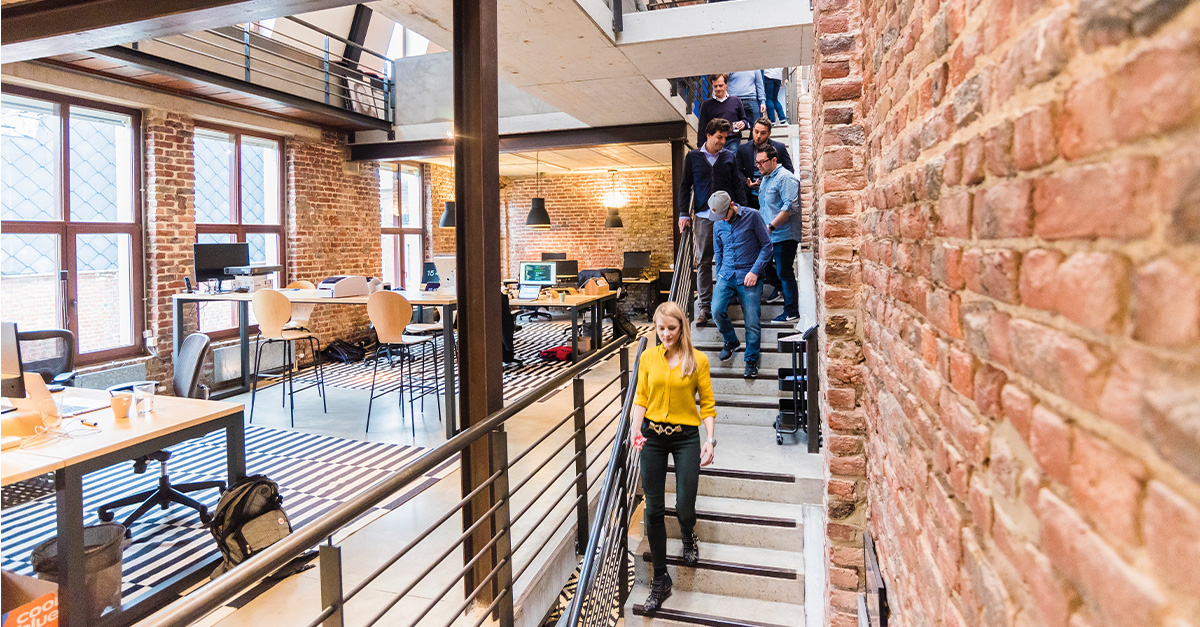8 min read
Mastering Google Workspace Management: All You Need to Know
Google Workspace is an incredibly powerful suite of tools for businesses. But mastering all the features and management can be a daunting task. From...
As more data becomes digitized, businesses and individuals are becoming increasingly concerned about maintaining data security.
Google Workspace (formerly G Suite) offers a range of security features to help protect user data. From encryption solutions to advanced protection programs, Workspace has implemented measures to ensure user information stays safe.
Let's take a look at the key security features of Workspace and how to follow best practices.
Google Workspace is built on a secure infrastructure with multiple layers of protection, including physical security in data centers, access control measures, and continuous monitoring.
Some of the key security measures provided by Google Workspace include:
By adopting Google Workspace for your organization, you are leveraging the experience and expertise of Google in protecting your critical data.
Many features contribute to the robust security capabilities of Workspace. Let's take a look at the main components.
Google Workspace ensures that your data is well-protected through encryption. It utilizes encryption in transit and at rest, adding an extra layer of security so your data is unreadable if intercepted. When you use Google Workspace, your data is encrypted:
One critical aspect of data security is ensuring that only authorized individuals can access your organization's Google Workspace account.
Two-Factor Authentication (2FA) is an effective security measure that requires users to provide two forms of identity verification before they are granted access.
By enabling 2FA, you significantly reduce the chances of unauthorized access to your account, even if a user's password is compromised.
Another layer of security offered by Workspace is the Advanced Protection Program (APP). This specialized security program is designed for administrators and provides advanced security features to protect the organization's sensitive data.
Some of the key features of APP include:
Incorporating the Advanced Protection Program into your organization's Google Workspace implementation can significantly enhance your security posture and protect your data from potential breaches.
While we think of Workspace as a cloud-based system, there are physical data centers needed to store information.
Google's data centers are protected with several layers of security, including perimeter defense systems, comprehensive camera coverage, biometric authentication, and 24/7 guard staff.
Google also has local and regional security operations centers covering the entire data center fleet. These SOCs monitor and respond to all alarms and constantly track local and global events that may impact data center operations.
Along with routine testing, these teams run a robust enterprise risk management program to proactively mitigate risks at data centers.
Also, check out our blog that compares Google Workspace Security and Office 365.
As an administrator, there are certain practices and standards you can enforce to ensure your team follows security best practices.
Strong passwords are the foundation of robust account security. A weak password can be easily cracked, allowing criminals to gain unauthorized access to your Workspace data.
Follow these guidelines for creating a robust password for your account:
In addition to implementing secure passwords, consider activating two-factor authentication (2FA) for added protection. With 2FA enabled users must provide an additional verification method, such as a fingerprint or SMS code, to access their account.
Google Workspace enables seamless collaboration by allowing users to share documents, spreadsheets, and presentations. However, failure to manage sharing permissions properly can lead to unauthorized access to sensitive information.
Follow these tips to ensure sensitive documents remain secure:
Monitoring user activity can help identify potential security threats and unauthorized access to your Google Workspace account. Regular user activity audits can help ensure that only authorized individuals have access and that their activity aligns with their job responsibilities.
Tips for monitoring user activity include:
One of the most valuable tools admins can use is Workspace's reports. The reporting section of the Admin console includes a range of reports about user activity, organization-wide data, and more.
Here are the reports you can access via the Admin console:
Many organizations may require additional security measures beyond what Google Workspace provides. In these cases, third-party integrations and partnerships can help to enhance security further.
The Google Workspace Marketplace is a platform through which developers can offer their applications and integrations to Google Workspace users. Many security-focused applications are available in the marketplace and can provide additional security features.
Examples of popular security integrations include:
It is important to vet all third-party developers before integrating their applications into your Google Workspace environment.
The vetting process is crucial to ensure that the third-party app developers are adhering to industry-standard security measures and can be trusted with access to your Google Workspace data.
When vetting a third-party developer, consider the following:
To ensure you protect your team and data as much as possible, consider asking questions like:
The more you understand a third-party developer's security practices and systems, the more transparency you'll gain when entering a partnership.
In the case of a data breach or accidental security risk, the Workspace team moves quickly to address the issue.
Google's incident response program is managed by teams of expert incident responders to ensure a well-tailored solution.
For example, Google incident commanders may first address the nature of the issue while the digital forensics team detects ongoing attacks and performs investigations. At the same time, the legal team may be working to implement Google's strategy for evidence collection.
As an admin, you can control which security and incident alerts you receive, whether you want to be notified about suspicious logins or app outage issues. To learn more about setting admin security notifications, click here.
Workspace maintains backups of primary data for disaster recovery and business continuity. Primary data includes data for core services: Calendar, Drive, Forms, Gmail, Docs, Sheets, Slides, Chat, Keep, Meet, New Sites, and Vault. Note that Google's disaster recovery varies by region.
To learn more about what primary data is backed up for you, click here.
If you want to accelerate your Google journey and get the most out of Workspace, Promevo can help. Promevo is a certified Google partner specializing in Workspace management, Google Cloud services, ChromeOS devices, and more.
In addition to providing end-to-end support with your Workspace pain points, Promevo also has our own exclusive Workspace management software, gPanel®.
With gPanel®, admins can take security to the next level by centralizing user management, gaining deeper visibility through logs and audits, and instantly managing permissions.
If you're ready to get more from your Google journey and harness the power of complete security, learn more about gPanel® and contact Promevo today.
Yes, Google Workspace is designed to be secure and is an excellent choice for businesses of all sizes.
Google takes security seriously and offers a variety of features to protect data, such as data loss prevention, security key management, and Google Vault for data archiving, among others.
In addition, Workspace undergoes regular security audits, ensuring that it complies with industry standards and best practices.
Google has obtained several security certifications to demonstrate its commitment to keeping your data safe. These certifications include:
Yes, Google Workspace has a variety of security features to help keep your data safe. This includes encryption of data in transit and at rest, anti-malware scanning, phishing protections, password protections, and more.
Some of the key security measures Google uses for Workspace include:
• Encryption of data in transit and at rest using TLS and AES 256-bit encryption. This helps prevent unauthorized access.
• Anti-malware scanning and sandboxing of attachments to block malicious files.
• Automatic blocking of emails identified as phishing attempts.
• Two-step verification for additional login security.
• Role-based access controls to limit employee access.
• Security monitoring to detect suspicious activity.
Google Workspace provides enterprise-grade security suitable for businesses. Features like encryption, anti-phishing, endpoint management controls, and security monitoring help secure business data stored and accessed in Workspace. Google also has certifications like ISO 27001 that validate its security practices.
Google Drive data is encrypted at rest and in transit by default, protecting files even if accessed from outside Workspace. Access permissions, sharing controls, and Drive security scans also help keep Drive secure. For businesses, Drive security can be enhanced with endpoint management, access logs, retention policies, and legal/compliance holds.
Meet the Author
Promevo is a Google Premier Partner that offers comprehensive support and custom solutions across the entire Google ecosystem — including Google Cloud Platform, Google Workspace, ChromeOS, everything in between. We also help users harness Google Workspace's robust capabilities through our proprietary gPanel® software.

8 min read
Google Workspace is an incredibly powerful suite of tools for businesses. But mastering all the features and management can be a daunting task. From...

5 min read
Google Workspace is a collection of cloud-based productivity and collaboration tools used by businesses of all sizes. As an administrator, it’s...

14 min read
Google Workspace is a collection of powerful tools and features designed to help businesses streamline their operations and increase productivity. If...